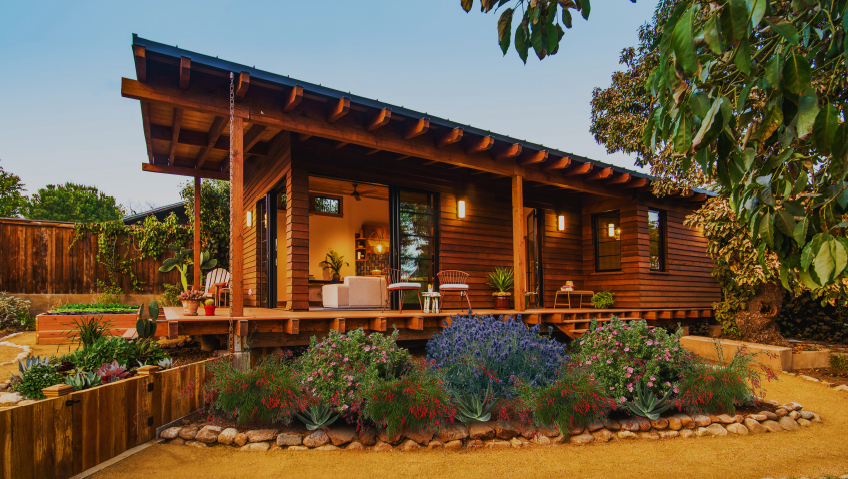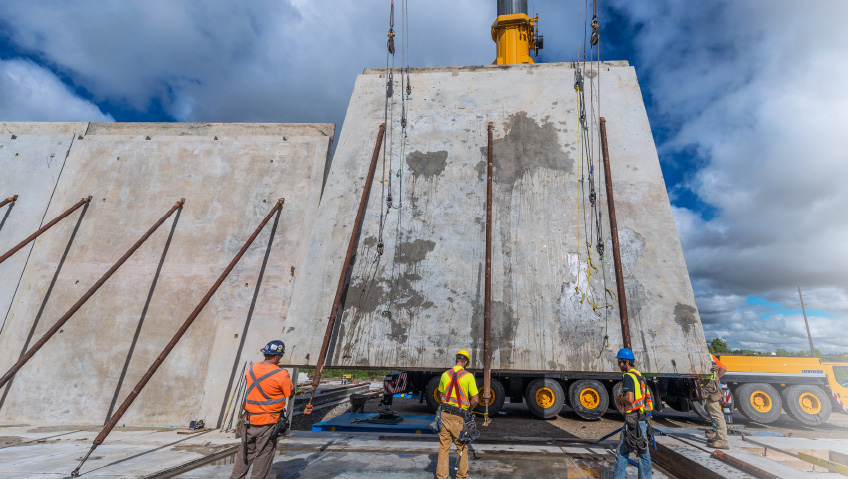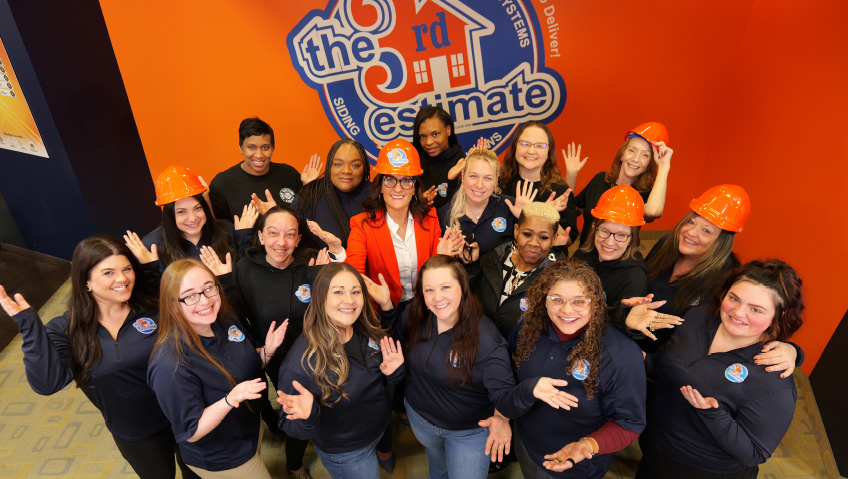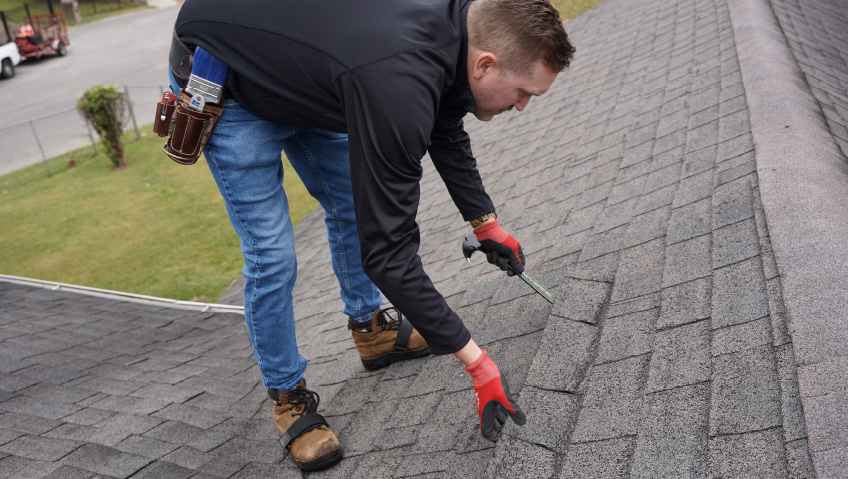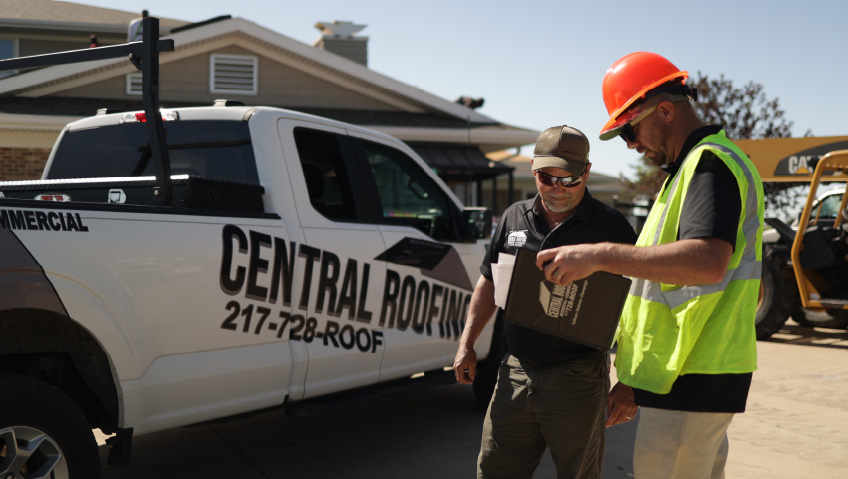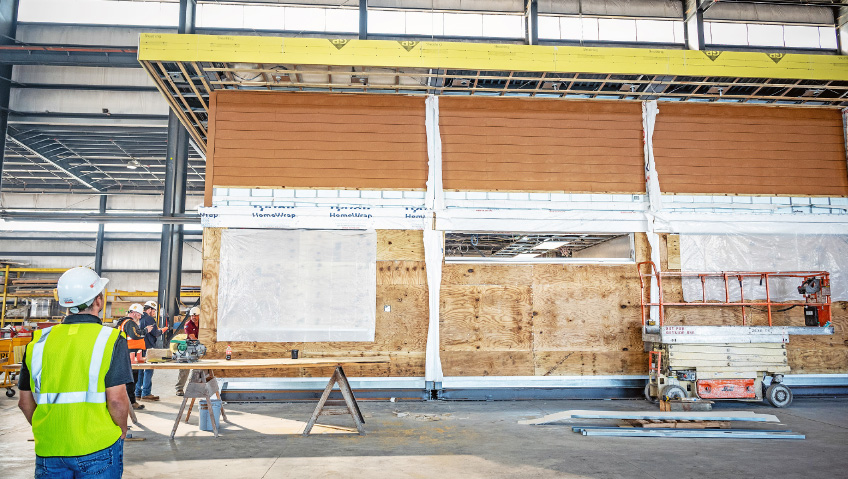Far from the cookie-cutter designs of modern homes with monotonous colors, styles, and accessories, Los Angeles-based Home Front Build strives to help homeowners embrace their own unique tastes by taking reclaimed items and repurposing them in either new builds or rebuilds, and making living spaces truly exceptional.
But this company does more than just please aesthetically; it also embraces sustainable practices by understanding that architecture and construction are two fields where eco-friendly methods can make a big difference. By utilizing recycled and environmentally friendly materials instead of traditional building methods that often rely on resource-intensive materials that produce much waste and pollution, sustainable design promotes the use of reclaimed wood, and recycled steel and concrete.
CarbonShack, the sister company of Home Front Build, was founded 20 years ago in support of historic preservation, restoring homes to their previous beauty and glory. During restoration, if the home was being renovated and remodeled and architectural pieces were being removed, Home Front Build would often store them. Over the years, the company built up a collection of old doors, windows, floorboards, and studs from homes that were built 100 or more years ago with lumber that’s no longer available commercially.
“There was a great wealth of the materiality of those elements that we collected, so at a certain point we realized it would be so much better for the environment and economically feasible to re-use those elements in remodeling some of these homes,” says Greg Roth, senior interior designer.
“If a client wanted a new addition put on a home, we were able to use those salvaged studs or doors and windows that were originally harvested from forests over 100 years ago and put those into an older home being remodeled.”
This means the company was not creating new carbon footprints from hauling lumber from afar or having new materials crafted and fabricated, says Roth. “We’re making use of materials that were already in the marketplace and the carbon footprint which had already been established.”
That was the concept behind the question of whether it was possible to build carbon-neutral homes, Roth adds. The company’s first project in 2016 was called Casa Zero, a deep exploration into what it would look like to build a home with zero carbon footprint and use as little new construction material as possible in the building and furnishing while incorporating low-carbon methodologies both in the operational carbon footprint and in the fabrication.
Additionally, Home Front Build has also developed home furnishing lines, including tile, fabrics, and lighting, with all products designed in Los Angeles and produced and fabricated by local artisans wherever possible.
“We strive to source all materials within about a 300-mile radius or so, which includes furniture we have built using urban forest lumber,” Roth says. “We work with a couple of vendors locally who harvest trees that have fallen or need to be taken down within the city of Los Angeles rather than going to a forest outside of the city. We reuse that lumber and craft it into furniture, and also use it in the homes we’re remodeling if people want cabinetry or countertops made from them. So that’s pretty exciting.”
In keeping with that mandate, when the city recently required a street widened in front of the project property that necessitated the felling of an old sugar pine, Home Front Build had it milled and made into furniture.
“Another thing I’m very excited about is our fabrics. We work with hemp as a main fiber content as the textile is less water-intensive in its growth, production, and fabrication than any other commercially available fiber,” says Roth.
“People are excited when they can use organic cotton,” he adds, “which is great, but cotton uses a tremendous amount of water in growing, harvesting, and processing, while hemp uses a fraction of that.”
Hemp, he adds, is also very versatile, naturally resistant to mildew, UV, and bacteria, and can be woven into a tremendous variety of textures. “We print our bespoke designs on hemp which we sell through the showroom we have here at the office.”
However, Home Front Build is not only focused on sustainability. Aesthetically, its brands take a lot of inspiration from the natural world, such as fabric prints of microscopic imagery of mycelium, the network of tentacles and roots of fungi that runs through the soil of the forest and connects the different plants.
“We’re big on using nature as inspiration for aesthetic design choices,” Roth says. “Not only is some of this imagery incredibly beautiful, it’s a way of bringing nature into the home and further reinforcing and reminding consumers and homeowners that we’re all connected to nature. We’re big advocates of keeping that in mind as a way of inspiring collective responsibility and action.”
Another nod to the company’s commitment to sustainability is its use of reclaimed sea plastics in its furniture designs by way of Los Angeles-based ByFusion Global Inc., which salvages plastics from the land and the ocean that are then shredded and compressed into dense blocks.
“They’re construction-grade, and can be used in any sort of structure,” Roth explains. “They’re solid, structurally sound, and beautiful. The company does some good in the world by taking waste out of the oceans and land and putting it into something useful. We thought, what if we developed another use for that and design some furniture?”
Home Front Build worked with ByFusion and a local fabricator to come up with a line of chairs and tables and is developing other pieces as well.
“We maintain that sort of simple integrity of the building block, and the seats have an optional cushion on them,” he says. “They’re suitable for indoors and outdoors and they’re very sturdy and quite heavy… they certainly have presence, and from our perspective, they’re like art pieces. They’re quite modern in that sensibility, plus they do good for the world. So we love that.”
The industry at large, he notes, is a tremendous producer of waste and pollution, so there’s a lot of opportunity as a company to make a difference in the world in terms of global warming, pollution, and consumption and waste.
“Because we have that responsibility and opportunity, we take it very seriously, and we want to be thought leaders and industry leaders,” Roth says. “We want to encourage and inspire consumers to be responsible shepherds of the environment, even in their decisions about their home design and interior design.”
The goal, he continues, is to bring the sensibility to home design and interior design that doing good can look good—and that everybody should consider it.
“That doesn’t mean everybody must do everything sustainable in their home,” he says. “That’s a big ask. Certainly, if you’re up for it, do it. But even for something like recovering a chair or stool, why not choose a fabric that doesn’t harm the environment? Even that small decision has an impact, so we’re looking for opportunities for people to take on those responsibilities and the role of helping out the Earth. We’re providing a lot of opportunities for that.”
And people are interested. The topic of sustainability isn’t going away and comes up regularly in panel discussions and online articles.
“I think consumers are interested in knowing how they can make decisions that are healthy for them, their families, and the planet,” says Roth. “Does that mean everybody’s running toward it with open arms? Not necessarily. There are some costs and learning curves involved.”
There is also some pushback, as there often is with any technology that’s new and generally requires extra cost, so people are often reluctant to openly embrace it. “When we find people willing to take the risks and who are open to being pushed a little bit, then it makes a lot of sense, and people come around,” Roth says.
He adds that Home Front Build is also an advocate of electric induction ranges and cooktops in homes rather than gas and fossil fuel.
“Gas-burning stoves are a tremendous polluter inside the home,” Roth says. “There’s a very clean way of cooking that’s better for the environment, and there’s a range of opportunity for consumers.”
While the gas industry has done a tremendously good job, he adds, of “romanticizing the blue flame of gas”—making it harder to leave that and jump onto the electric induction cooktop bandwagon—people are coming around and communities and regulations are shifting in that direction as well.
Natural resistance to embracing new technology among consumers and contractors is just one of the challenges Home Front Build has been up against. But Roth adds that there’s now a groundswell in the home construction and interior design industry toward sustainability and responsibility, and the stewardship of the Earth and its resources.
“Given global warming and the intensification of the effects of the changing climate, I don’t feel like these movements are going away,” he says. “There’s an opportunity for people to shift their thinking about the way homes are built and the way we use homes and the material finishes we choose for them. Whether you’re in California, Canada, or Europe, the world is changing. Global warming is happening and it’s 100 percent affecting the way we live in our homes.”
Whether it means improving insulation or putting in double-glazed windows, there are ways to address this in design and construction that require attention. “It’s a challenge we all need to step up to.”
Home Front Build continues to step up by promoting the importance of sustainability, recently hosting a panel event at its showroom and co-hosting two other events at the Pacific Design Center that focused on how the industry can address waste, and what designers, architects, fabricators, builders, and suppliers can do to make the world and their industries better for everybody.
“We look at this process holistically; it’s not simply, ‘we’re going to put steel into this house,’ but rather, ‘what is the full life or the carbon footprint of the cycle of that steel or wood or glass?’” Roth says. “We work to minimize the carbon footprint, but we take it a step further.”
Home Front Build also provides consumers or homeowners with every service needed, from initial concept and working with the city for permitting and architectural drawings to interior design, installation, landscaping, and providing and designing products they need as well.
“We’re carrying over that notion of sustainability by offering all we can in our services and consultation on sustainable use of the home and the footprint of the home, and the architectural and interior design products for the home,” says Roth.
The company also provides a tool with a calculator that anyone can use to input information on their building and establish both their current and projected carbon footprints.
“We’re trying to offer not just the services, not just the product, but also the information,” Roth says. “I think that sets us apart from a lot of other design and design-build firms. We’re looking at it holistically. We’re engaging and we’re striving to educate.”

